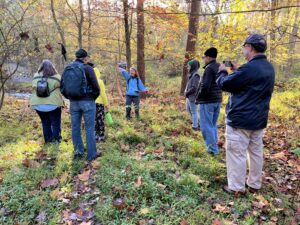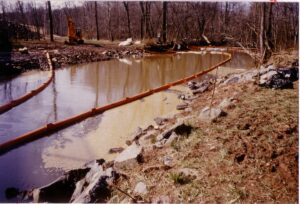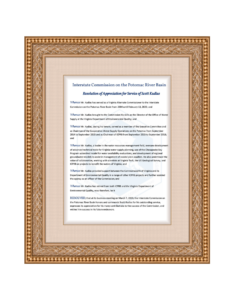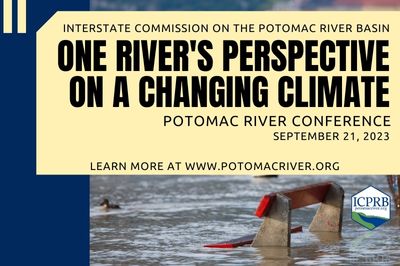Media from Around the Basin – April 13, 2023
Click Here to see the Potomac News Reservoir Newsletter.
*IMPORTANT* This weekend’s stream cleanup in Frederick, MD, will be switched from Saturday to Sunday due to the forecasted thunderstorms. We hope you can still join us to celebrate Earth Day by making a difference in our environment and our community as we work alongside friends and neighbors to protect our water quality.
Join us to learn about innovations in sustainable agriculture
WEBINAR: Innovations in Sustainable Agriculture
Friday, May 12, 12-1:15pm
The next installment of our webinar series will be on Innovations in Sustainable Agriculture in the Potomac watershed. Speakers from Swift Aeroseed LLC, Franklin County PA Soil and Water Conservation District, Penn State University, and Rosetree Consulting LLC, will share case studies on innovative sustainable agriculture, including nutrient management, cover cropping, energy and water efficiency, and smart sensing.
This event is one of a series of webinars being held as part of the implementation of the Potomac Basin Comprehensive Water Resources Plan. Recordings of previous webinars can be found on our YouTube page.
The webinar is free and open to the public.
Upcoming ICPRB Events
Stream Cleanup: Rock Creek (*RESCHEDULED FOR APRIL 16* in Frederick, MD)
Walk in the Woods: Frederick Municipal Forest (April 29 near Frederick, MD)
WEBINAR: Innovations in Sustainable Agriculture (May 12, Virtual)
Find these and other events around the Potomac watershed on our Events Calendar.
_____________________________________________________
Media from around the Basin
Dry weather taking a toll on DC region
WTOP
While winter never showed up with much snow, spring isn’t proving beneficial in terms of bringing rain into the D.C. region — and it’s showing with stream and creek levels.
C&O Canal Boat Tours Are Back for the Season Starting May 5
Washingtonian
This will be the new boat’s second season since rides resumed last year in Georgetown. Here’s how to get tickets.
NSF grant to investigate the role of macrobiota in carbon cycling in estuaries
PennState
This research focuses on two contrasting tidal tributaries of the Chesapeake Bay: the Potomac River, where they found the alkalinity coming into the Bay was high; and the York River, where the alkalinity coming in was significantly lower.
Maryland Spring Trout Stocking Program Continues; Bay Water Warms Up for Gamefish
The Southern Maryland Chronicle
With the arrival of spring in Maryland, the weather has taken a turn for the better, and it’s an excellent time to enjoy the great outdoors. Fishing, in particular, is a wonderful activity, especially for families and children, and the spring trout stocking program continues throughout the state.
Environmental Events to Celebrate Our Planet
The Washington Informer
If you’re looking for a way to give back, learn something new or enjoy art that appreciates nature, check out these events going on this week and next.
St. Mary’s County to Purchase New Water Taxi with $219,000 Grant
The Southern Maryland Chronicle
The Commissioners of St. Mary’s County announced that the new water taxi will provide reliable rides for visitors to St. Clement’s Island State Park and will be accessible from pier to boat for wheelchairs, walkers, strollers, etc.
Expanded Weapons Testing On The Potomac River Leaves Many Waterman Concerned
The BayNet
A bureaucratic notice posted in the Federal Register in December 2022 has drawn the concern of many residents, especially the watermen. The notice requests public comment on a proposed 20-mile expansion of the middle “danger zone”.
Eastern PWC drinking water exceeds limit on ‘forever chemicals’
Prince William Times
As the Environmental Protection Agency prepares to regulate a group of chemicals called PFAS in drinking water throughout the country, a preliminary test in 2021 showed that the water on the eastern side of Prince William County, which comes from the Occoquan Reservoir, was over the newly proposed limit.
Fishing Season Kicks Off Slowly Due to Cold Weather
The Southern Maryland Chronicle
The start of the fishing season has been slow due to chilly weather, but things are starting to pick up as the temperatures rise.
Dominion shares Possum Point landfill plans, Bailey noncommittal
Potomac Local News
Dominion Energy is bullish on placing its remaining coal ash in a $347 million landfill at Possum Point.
Bald Eagles Return to Bladensburg Waterfront Park Amid Anacostia River Cleanup
The Hyattsville Wire
You can now regularly spot bald eagles at the Bladensburg Waterfront Park.
How you can prepare during Flood Awareness Month
WUSA9
Did you know that flooding is the number one natural hazard in Maryland? From the mountains to the coastal plains, everyone in the state is susceptible to flooding.





